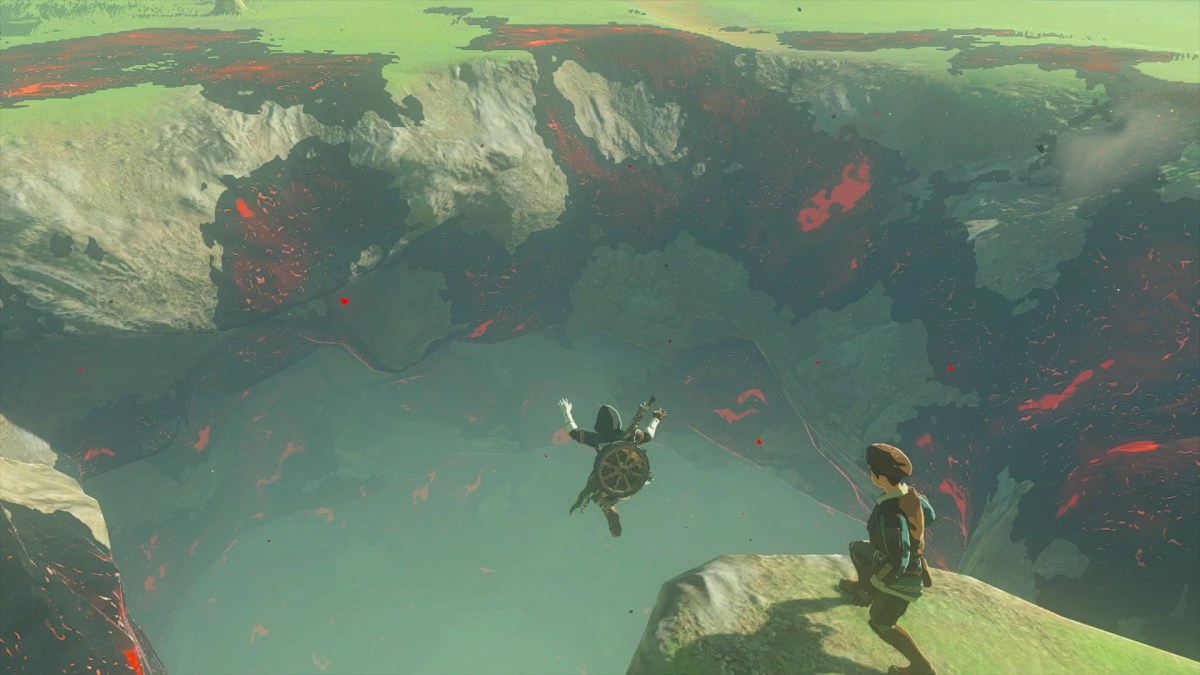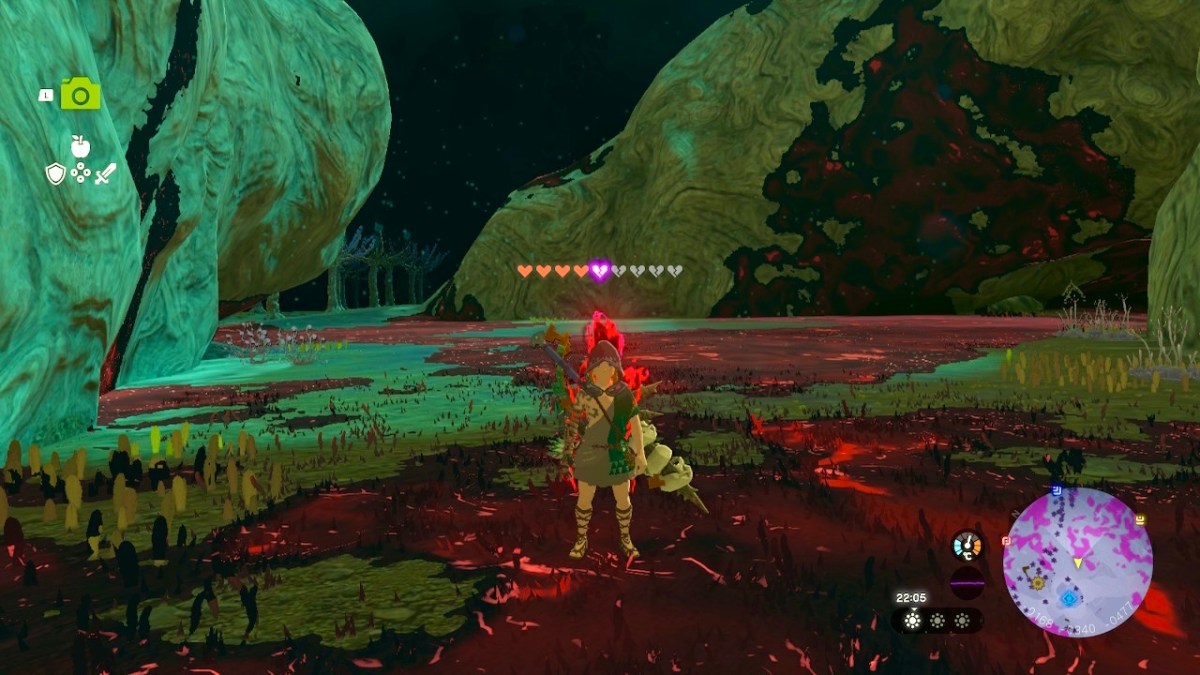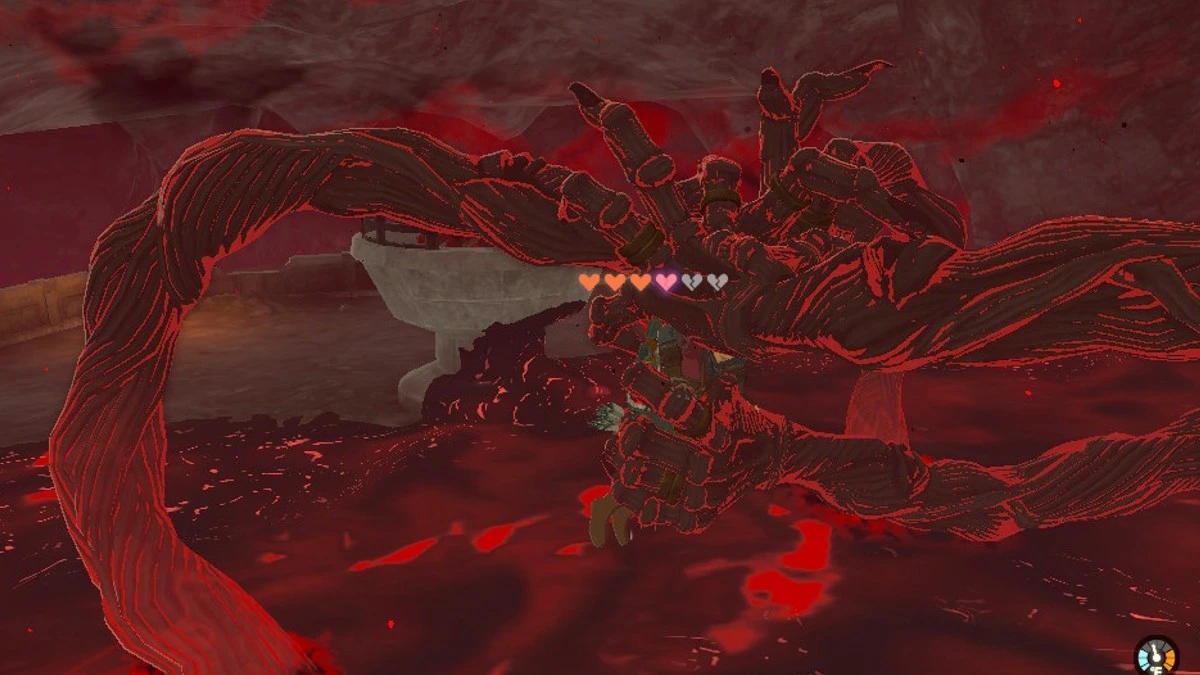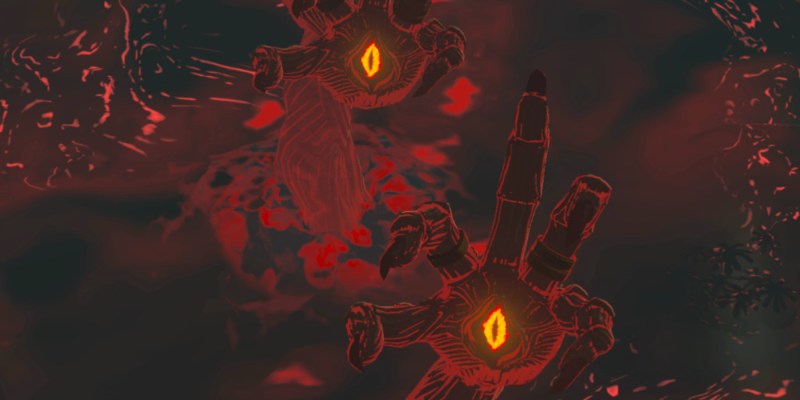Unfortunately for The Legend of Zelda: Breath of the Wild, Link has a bottomless stomach. He can scarf down baked apples, cram raw fish, put back soups, and devour meat kabobs like Hyrule depends on it – and in some ways, it does. Cooking up tasty dishes is the best way to keep Link on his feet, as meals made with love (enough Lon Lon Milk to kill a Moblin) can refill hearts, push his health bar past its limits, or even offer the stamina boost to send Link up a mountain. And I can’t stand it.
Don’t get me wrong — it’s great to see a Zelda game with fleshed-out cooking mechanics. My problem lies with how it all comes together. Link can hold a smorgasbord in his inventory, and because players can pause and freeze time at a moment’s notice, it’s difficult to die at the hands of an enemy in the game’s back half. Many players never mastered the combat; they only got more hearts and became more proficient at moving through the meals page. Breath of the Wild does so much right, but its impeccable vision is sometimes marred when you can pause moments before death and inhale enough food to turn Link into a superhero. The ability to freeze combat and infinitely bounce back is a smudge on an otherwise breathtaking video game.
Less Doom, More Gloom in Tears of the Kingdom
Enter Gloom, the sticky answer to Link’s insatiable appetite in The Legend of Zelda: Tears of the Kingdom. This red-and-black, icky, paint-like goop covered Hyrule along with the emergence of Ganondorf and the Upheaval, leaving its citizens confused and worried. Most players will first come into contact with the substance at the Hyrule Field Chasm just outside the Mabe Village Ruins. Take one step on this patch of slimy evil and a nearby Hyrulean will belt out a word of caution: “N-no! Traveler, don’t do it! If you touch that, well… It’ll sap your strength, and you’ll end up like me… too sluggish to move…”

The careful companion isn’t kidding; Gloom permanently decreases Link’s health while in contact with the stuff or in combat. It’s a quick killer, too, picking apart health containers one by one at around two seconds each as long as Link is touching it. It is only after Link leaves these encounters that his heart containers will return, albeit while still empty. Idle Gloom is simply a troublesome hazard to avoid at worst, but the Terminator-like threat that is Gloom Hands will ruin your day. Gloom Hands move in your direction with a fiery passion and can extend their reach to grab and trap Link, usually draining at least one heart per snatch.
Gloom, on Hyrule’s surface, is already a vast improvement over what we had before, as players can’t just eat regular meals to regain health during these encounters. Instead, players must focus on the on-their-toes strategy and survival skills that weren’t necessary with Breath of the Wild’s exploitable cooking system. The sight of Gloom in Hyrule for Tears of the Kingdom adds a sense of heightened awareness even if it’s only its stationary incarnation. Gloom Hands especially elicit terror thanks to their ability to pop out of the ground seemingly at random. That feeling you get when the sky suddenly turns red and Gloom Hands sprout up to scream and chase in your direction is one feeling Breath of the Wild only ever captured with its Guardian enemies.
Gloom, in some ways, even enhances cooking as it existed in Breath of the Wild. Not only does the system functionally remain intact for those who enjoyed it last time around, but there are new materials that can be stewed together to both recover Gloom hearts and ward off the hazard’s effects. If you know you’ll be coming into contact with some Gloomified enemies soon, you can cook up some Sundelions to head into battle with an anti-Gloom blanket of comfort. It’s nice to see Nintendo encouraging preparation in Tears of the Kingdom instead of pushing for more clunky menu navigation like we saw in Breath of the Wild.

Looking Deeper
Tears of the Kingdom’s most substantial world addition isn’t one that was heavily advertised. The Depths are an expansive, layered subterranean open world that lies deep beneath Hyrule. Its unique enemies, items, and mechanics make it both challenging and exciting to parse through. If you haven’t been there for yourself, you should know that the Depths are pitch black and have fields and enemies covered in Gloom. And most notably, down here, heart containers taken by Gloom will not return on their own. Instead, players must return to the surface, stand directly beneath the few-and-far-between points of interest known as Lightroot, or come prepared with Gloom-resistant meals and armor.
On Hyrule’s surface, Gloom simply addresses the pause-and-eat exploit, but in the Depths, the issue is nearly nonexistent. Sundelions and armor can only do so much when evil sludge is around literally every corner, but even then, I’d rather players utilize those tools and other elements of the gameplay than menu-surf the second they get scared. It’s the yin to the meal system’s yang, and it’s an organic way to motivate players to look at combat encounters from every angle.
Overall, Gloom in Tears of the Kingdom is a better solution to the cooking manipulation that Breath of the Wild encourages than I ever could have imagined. You’d have to dig deeper than the Depths to come up with something better, but that doesn’t mean it’s perfect. While Tears of the Kingdom’s combat and creativity-based gameplay shine bright in the Depths, it’s also where a few very minor blemishes can be found.

Tears of the Kingdom’s autosave feature is so generous that it’s often a more efficient use of time and resources to just die instead of carrying on through the darkness with major Gloom damage. Bokoblins are bound to periodically land potshots with arrows and pebbles, so why waste time pushing forward with a fraction of your heart containers when you can just reload moments before and come up with a better strategy? Deciding that death is a more optimal approach mid-combat encounter isn’t ideal, but it’s the decision I imagine many players are left with in the Depths, especially in the first few dozen hours of the game.
Still, I’d rather deal with this real-time decision-making than the anti-strategy approach woven throughout Breath of the Wild. Everything is elevated in Tears of the Kingdom, including its combat, and it will forever bring a tear to my eye to see that Nintendo spackled this crack in the otherwise stable foundation of the last two Zelda games.
